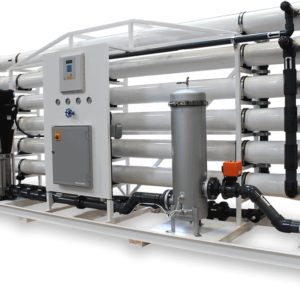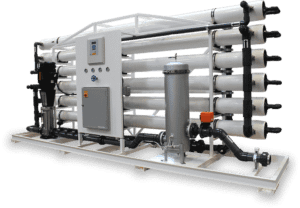Brackish Water Plants Tank
Buy on whatsappDescription
Brackish Water Plants Tank
If you are interested in setting up a brackish water aquarium, you may have heard of brackish water plants. These plants are a great addition to your tank, not only for their aesthetic appeal but also for their role in maintaining the tank’s health. In this guide, we will cover everything you need to know about brackish water plants for your tank.
What are Brackish Water Plants?
Brackish water plants are those that are able to grow in brackish water, which is water that is a mixture of freshwater and saltwater. These plants have adapted to survive in the unique environment of brackish water, where the salinity levels are constantly changing.
Benefits of Brackish Water Plants
Brackish water plants offer several benefits to your tank. They help to oxygenate the water, remove excess nutrients, and provide a natural habitat for fish and other aquatic animals. In addition, these plants can help to prevent the growth of algae and other unwanted organisms.
Popular Brackish Water Plants
There are several popular brackish water plants that you can consider for your tank. Some of the most commonly used plants include:
Java Fern
Java Fern is a popular aquatic plant that is native to Southeast Asia. It is a slow-growing plant that does not require much light or fertilizer. Java Fern can grow up to 13 inches tall and can be attached to rocks or other decorations in your tank.
Anubias
Anubias is a hardy plant that is native to Africa. It can grow up to 16 inches tall and can be attached to rocks or other decorations in your tank. Anubias is a slow-growing plant that does not require much light or fertilizer.
Amazon Sword
Amazon Sword is a popular aquarium plant that is native to the Amazon River Basin. It can grow up to 20 inches tall and requires moderate light and fertilizer. Amazon Sword is a fast-growing plant that can quickly fill out your tank.
Vallisneria
Vallisneria is a popular aquatic plant that is native to North America. It can grow up to 24 inches tall and requires moderate light and fertilizer. Vallisneria is a fast-growing plant that can quickly fill out your tank.
How to Care for Brackish Water Plants
Brackish water plants require specific care to thrive in your tank. Here are some tips to help you care for your brackish water plants:
Water Conditions
Brackish water plants require a specific salinity level to thrive. The ideal salinity level for most brackish water plants is between 1.005 and 1.020. It is important to monitor the salinity level of your tank regularly to ensure that it is within this range.
Lighting
Most brackish water plants do not require much light to grow. However, it is important to provide some light to your plants to ensure that they can carry out photosynthesis.
Fertilization
Brackish water plants do not require much fertilizer to grow. However, it is important to provide some nutrients to your plants to ensure that they can grow properly.
Pruning
Brackish water plants can grow quickly and may need to be pruned regularly to prevent them from overcrowding your tank. Use sharp scissors or pruning shears to trim back any excess growth.
Conclusion
In conclusion, brackish water plants are a great addition to your tank. They offer several benefits and can help to keep your tank healthy and beautiful. By following the tips outlined in this guide, you can ensure that your brackish water plants thrive in your tank.
{finish}
FAQs
- Can I mix freshwater and saltwater plants in a brackish water tank?
It is not recommended to mix freshwater and saltwater plants in a brackish water tank. Instead, choose plants that are specifically adapted to brackish water conditions.
- How do I acclimate brackish water plants to my tank?
To acclimate brackish water plants to your tank, it is important to slowly adjust the salinity levels over a period of several days. This will help the plants to adjust to the new environment without experiencing shock.
- Can I use brackish water plants with any type of fish?
Brackish water plants are compatible with most brackish water fish species. However, it is important to research the specific requirements of the fish species you plan to keep to ensure that they are compatible with your chosen plants.
- How often should I fertilize my brackish water plants?
Introduction
Brackish water plants can bring a unique and captivating touch to your aquarium. Unlike traditional freshwater or saltwater tanks, brackish water tanks offer an intriguing middle ground. In this article, we will explore the world of brackish water plants, providing valuable insights on setting up a brackish tank and selecting the perfect aquatic flora to enhance its beauty.
Understanding Brackish Water
Brackish water refers to a mixture of freshwater and saltwater, typically found in estuaries, mangrove swamps, and coastal areas. It is home to a distinct group of plants and animals that have adapted to survive in this intermediate salinity range.
Setting Up a Brackish Water Tank
Creating a suitable environment for brackish water plants requires careful consideration of water parameters, tank size, and equipment. Here are the essential steps to set up your brackish water tank:
- Tank Selection: Choose a tank size suitable for the plants and fish species you plan to keep. A larger tank with a capacity of at least 30 gallons is recommended for better stability.
- Substrate: Opt for a sandy substrate that mimics the natural habitat of brackish water plants. This substrate allows root establishment and facilitates nutrient absorption.
- Water Salinity: Measure and maintain the salinity level within the recommended range for brackish water plants, typically around 1.005 to 1.015 specific gravity.
- Filtration: Install a filtration system capable of handling brackish water requirements. A combination of mechanical, chemical, and biological filtration is ideal for maintaining water quality.
- Lighting: Provide appropriate lighting conditions that simulate the natural habitat of brackish water plants. Consider using full-spectrum LED lights to support their growth.
- Temperature and pH: Maintain a suitable temperature range of 75°F to 80°F (24°C to 27°C) and a pH level between 7.5 and 8.5.
- Cycling: Allow the tank to cycle for several weeks before introducing any plants or fish. This process establishes beneficial bacteria and stabilizes the tank’s ecosystem.
Choosing Brackish Water Plants
Selecting the right brackish water plants is crucial for a thriving tank ecosystem. Here are some popular choices:
- Java Fern (Microsorum pteropus): Known for its hardiness, Java Fern thrives in brackish water tanks. It can be attached to driftwood or rocks and adds a beautiful touch to the aquarium.
- Anubias (Anubias barteri): Anubias is another excellent option that can tolerate brackish water conditions. It features broad, dark green leaves and can be placed in the foreground or background of the tank.
- Hornwort (Ceratophyllum demersum): Hornwort is a floating plant that provides cover and shade for aquarium inhabitants. It requires minimal care and is well-suited to brackish water environments.
- Vallisneria (Vallisneria spp.): Vallisneria, also known as eelgrass, is a popular brackish water plant with long, ribbon-like leaves. It adds visual interest and serves as a natural oxygenator.
- Marimo Moss Ball (Aegagropila linnaei): This unique algae ball requires low maintenance and can be added to brackish water tanks. It adds a touch of greenery and helps maintain water quality.
Remember to research each plant’s specific care requirements and compatibility with other tank inhabitants before adding them to your brackish water tank.
Maintaining a Brackish Water Tank
To ensure the longevity and health of your brackish water plants, proper maintenance is essential. Here are a few key tips:
- Regular Water Testing: Monitor salinity levels, pH, and other water parameters regularly to ensure they remain within the optimal range for brackish water plants.
- Water Changes: Perform routine partial water changes to remove accumulated waste and maintain water quality. Aim for a 10% to 20% water change every two weeks.
- Pruning and Trimming: Trim and prune your plants as needed to control their growth and maintain an aesthetically pleasing appearance.
- Fertilization: Provide essential nutrients to your brackish water plants through liquid or root fertilizers, following the manufacturer’s instructions. Be cautious not to over-fertilize, as it can harm your plants and affect water quality.
- Algae Control: Keep an eye on algae growth in your tank. Maintaining a proper balance of light, nutrients, and water parameters will help prevent excessive algae growth.
Conclusion
Brackish water plants can transform your aquarium into a captivating underwater oasis. By setting up a brackish water tank and carefully selecting suitable plants, you can create an environment that resembles the coastal zones where these unique flora thrive. Remember to provide optimal conditions and maintain regular care to ensure the health and vibrancy of your brackish water plants. Enjoy the beauty and tranquility they bring to your aquatic world.
It is recommended to fertilize your brackish water plants once a month. Be sure to use a fertilizer that is specifically formulated for aquatic plants and follow the manufacturer’s instructions for best results.





